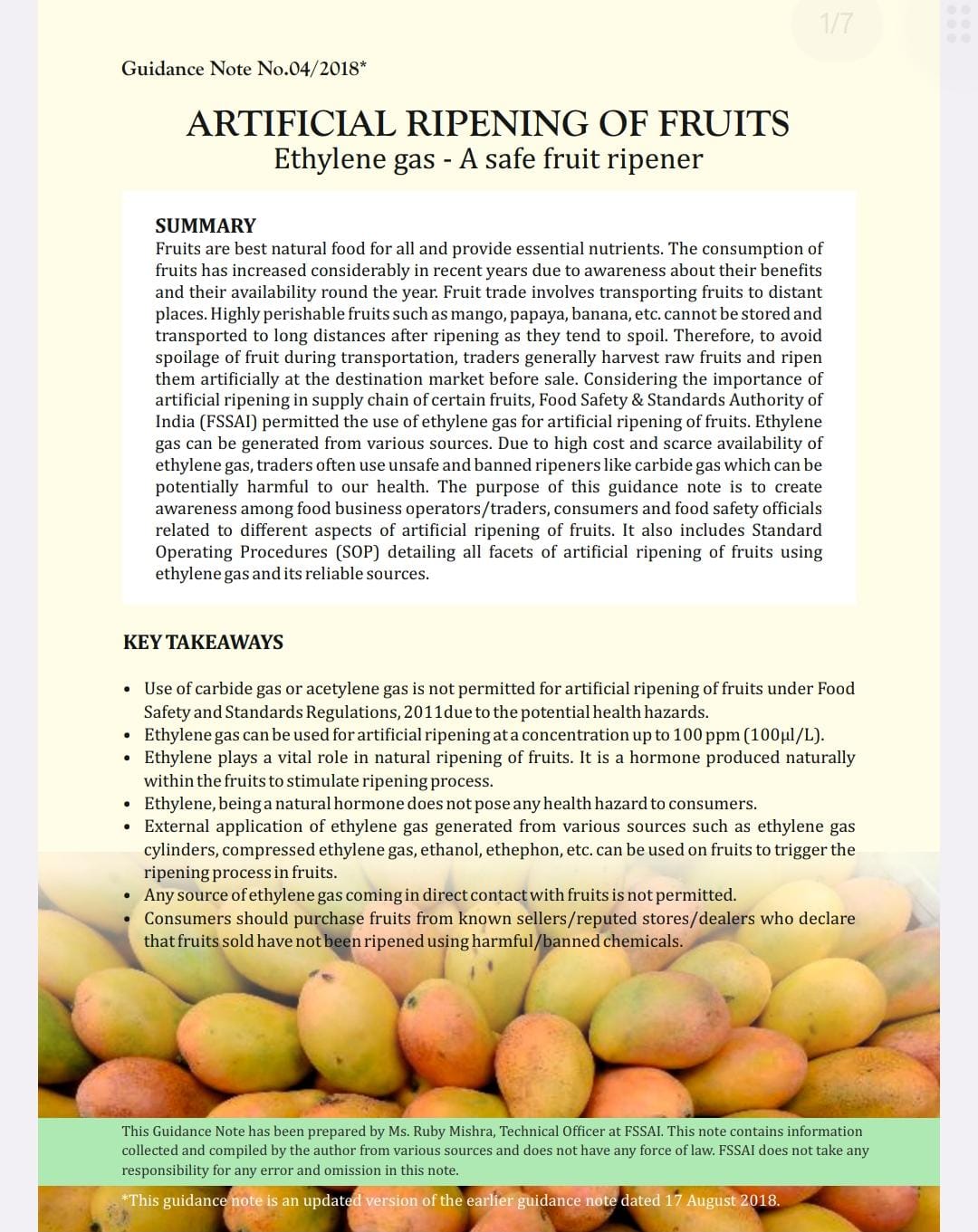Delicious Mango With Its Unknown Dangers!

By our correspondent
Geetika Gupta
The advent of Mango season is definitely a pure soothing delicious treat for all. Various delicacies in the Indian menu make mango a mouth watering addition for its tasteful flavor. But have you ever imagined, the mango juice being served for Rs.10 on the streets comes with artificial color and ice, that is from a questionable source.
This might look tempting but it poses a dangerous hazard to the human body as the yellow color is not of the prescribed grade and the ice sometimes belongs to extremely unhygienic sources. Also, according to the researchers information, the mango traders are using Ethephon, an imported harmful chemical in large quantities to ripen the fruit, which can bring serious health hazards to the consumers.
The traders use Ethephon during the transport of mangoes to ripen them quickly in order to achieve financial benefits. These traders are resorting to this harmful process without giving any consideration to the health of the consumers.
This ripening process reduces the duration of natural mango ripening time helping them to encash the opportunity citing the scarcity of fresh mango produce and demand by the end users.
The Assistant Joint Commissioner Mr. B.M. Thakur, FDA, while speaking to My City News said, "Now the Government has allowed Ethylene gas for ripening of mangoes which is considered safe. Earlier calcium carbide was being used and it would have caused cancer. If at all we find anyone using chemicals, then we conduct legal action against the culprits."
On being asked about the yellow color being used in mango juice and shakes he further said, "the usage of color in the mango juice or shakes is not permitted below the food grade standards. We will take strict action against the people violating the rules. Citizens can send umail on the FDA site mentioning the address where the vendor is using colors, our team will come into action immediately".
The bittersweet story of our king of fruits " Mango" surely brings some warnings along with its irresistible taste and fondness.
Some tips to check the chemically ripened mangoes:
Skin color check:Artificially ripened mangoes tend to have a stable yellow color with more yellow or orange appearance than naturally ripened mangoes. They might have a slightly shiny appearance due to the chemicals used for ripening.
Fragrance: Naturally ripened mangoes have a sweet, fruity fragrance, while artificially ripened mangoes may have a chemical or a different odour. In case mango has a strange or unpleasant smell, it might have been artificially ripened.
Firmness of the fruit:Artificially ripened mangoes may feel softer or mushier than naturally ripened mangoes. This is because the chemicals used in the ripening process can break down the cell walls in the fruit, making them softer.
External appearance: Artificially ripened mangoes may have external damage, such as bruises or spots, due to the use of chemicals. Natural mangoes are less likely to have these types of external blemishes.
Check on the taste: Artificially ripened mangoes may have a bland or strange taste, compared to the sweet and flavourful taste of naturally ripened mangoes. If the mango tastes off or has an unpleasant aftertaste, it may have been artificially ripened.
